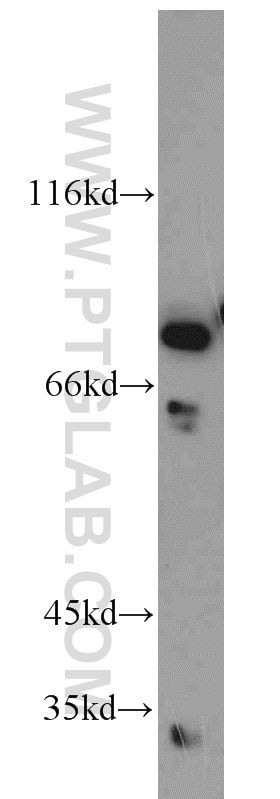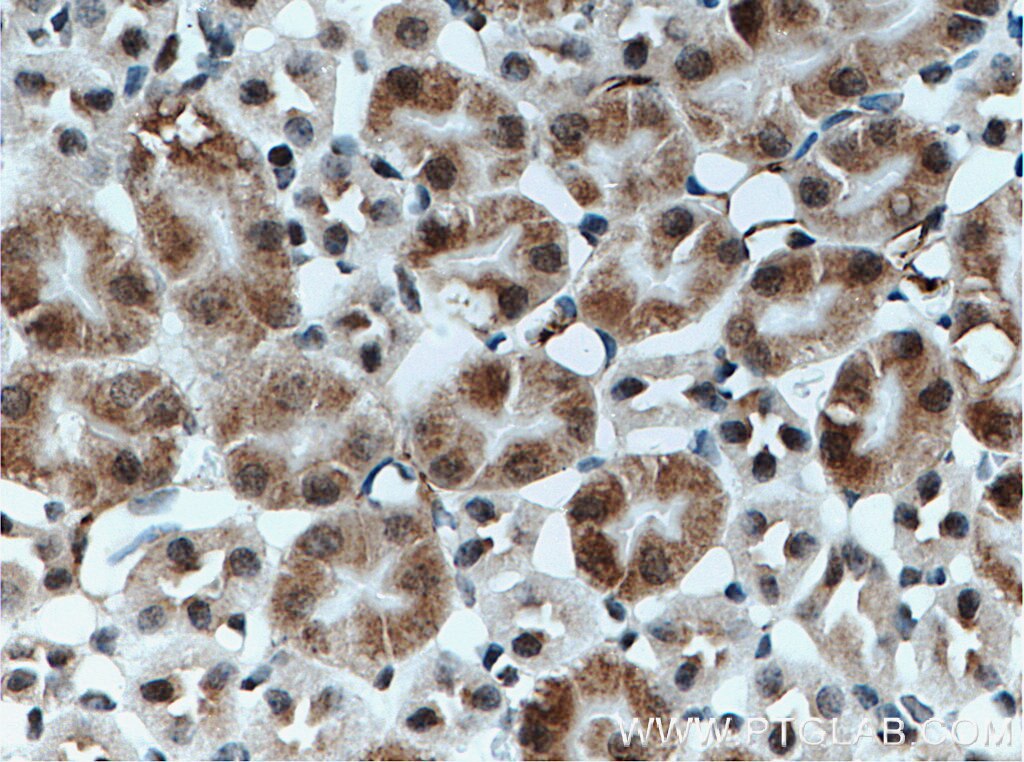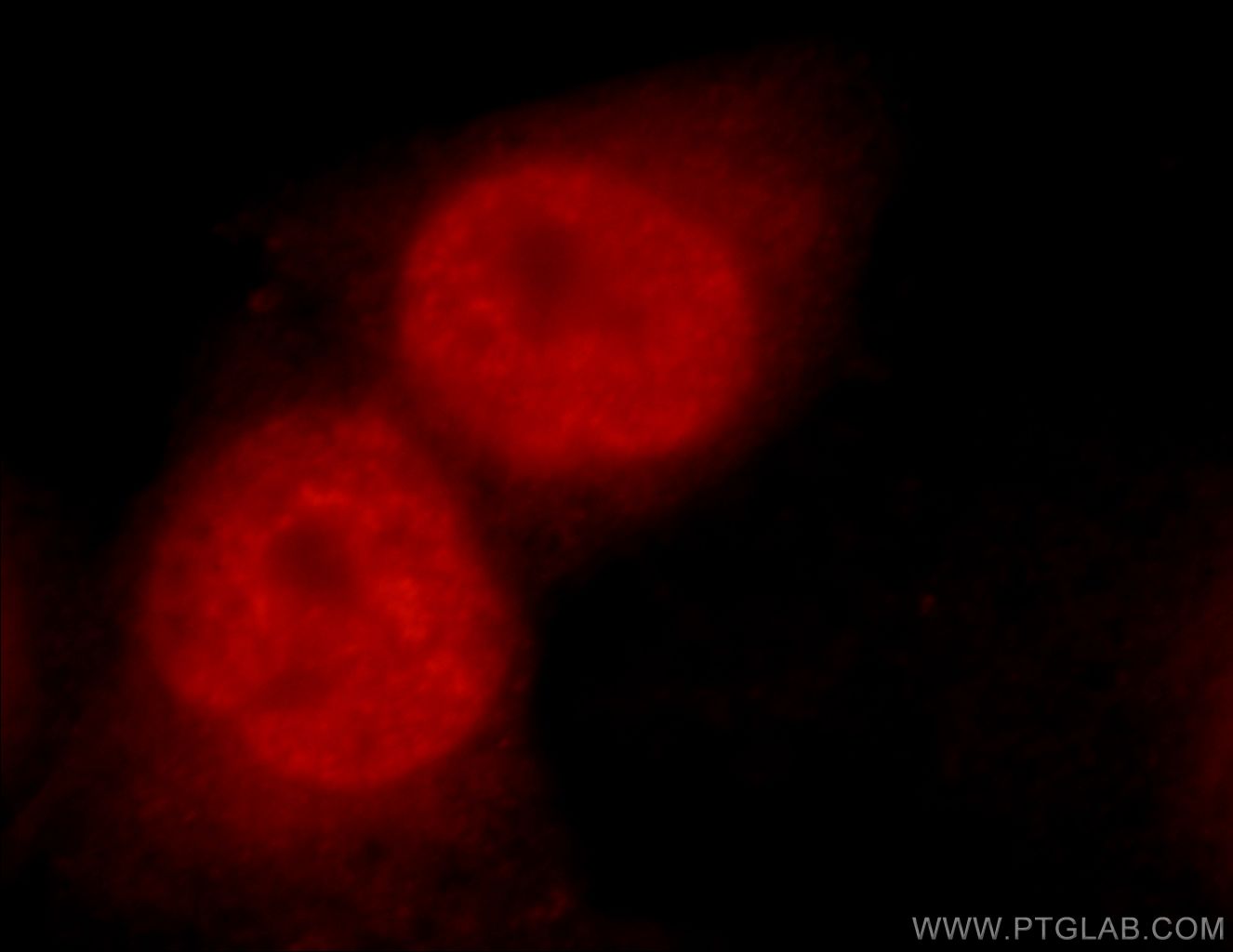C1orf106 Polyklonaler Antikörper
C1orf106 Polyklonal Antikörper für IF, IHC, IP, WB, ELISA
Wirt / Isotyp
Kaninchen / IgG
Getestete Reaktivität
human, Maus, Ratte
Anwendung
WB, IP, IHC, IF, ELISA
Konjugation
Unkonjugiert
Kat-Nr. : 21506-1-AP
Synonyme
Galerie der Validierungsdaten
Geprüfte Anwendungen
| Erfolgreiche Detektion in WB | Mausnierengewebe, HEK-293-Zellen, Rattennierengewebe |
| Erfolgreiche IP | Mausnierengewebe |
| Erfolgreiche Detektion in IHC | Mausnierengewebe Hinweis: Antigendemaskierung mit TE-Puffer pH 9,0 empfohlen. (*) Wahlweise kann die Antigendemaskierung auch mit Citratpuffer pH 6,0 erfolgen. |
| Erfolgreiche Detektion in IF | HEK-293-Zellen, HeLa-Zellen |
Empfohlene Verdünnung
| Anwendung | Verdünnung |
|---|---|
| Western Blot (WB) | WB : 1:500-1:2000 |
| Immunpräzipitation (IP) | IP : 0.5-4.0 ug for 1.0-3.0 mg of total protein lysate |
| Immunhistochemie (IHC) | IHC : 1:50-1:500 |
| Immunfluoreszenz (IF) | IF : 1:10-1:100 |
| It is recommended that this reagent should be titrated in each testing system to obtain optimal results. | |
| Sample-dependent, check data in validation data gallery | |
Produktinformation
21506-1-AP bindet in WB, IP, IHC, IF, ELISA C1orf106 und zeigt Reaktivität mit human, Maus, Ratten
| Getestete Reaktivität | human, Maus, Ratte |
| Wirt / Isotyp | Kaninchen / IgG |
| Klonalität | Polyklonal |
| Typ | Antikörper |
| Immunogen | C1orf106 fusion protein Ag15987 |
| Vollständiger Name | chromosome 1 open reading frame 106 |
| Berechnetes Molekulargewicht | 663 aa, 73 kDa |
| Beobachtetes Molekulargewicht | 70-73 kDa |
| GenBank-Zugangsnummer | BC106877 |
| Gene symbol | C1orf106 |
| Gene ID (NCBI) | 55765 |
| Konjugation | Unkonjugiert |
| Form | Liquid |
| Reinigungsmethode | Antigen-Affinitätsreinigung |
| Lagerungspuffer | PBS mit 0.02% Natriumazid und 50% Glycerin pH 7.3. |
| Lagerungsbedingungen | Bei -20°C lagern. Nach dem Versand ein Jahr lang stabil Aliquotieren ist bei -20oC Lagerung nicht notwendig. 20ul Größen enthalten 0,1% BSA. |
Hintergrundinformationen
C1orf106 (also known as innate immunity activator, INAVA) has thus far been considered to play a significant role in intestinal inflammatory diseases. C1orf106 is highly expressed in the human intestine and intestinal epithelial cell lines but expressed at low levels in myeloid cells and mouse bone marrow-derived macrophages (PMID: 29420262). Recent studies have also shown that C1orf106 protects against colitis by stabilizing E-cadherin and bridges mucosal barrier function with inflammatory signaling (PMID: 31376015).
Protokolle
| Produktspezifische Protokolle | |
|---|---|
| WB protocol for C1orf106 antibody 21506-1-AP | Protokoll herunterladen |
| IHC protocol for C1orf106 antibody 21506-1-AP | Protokoll herunterladen |
| IF protocol for C1orf106 antibody 21506-1-AP | Protokoll herunterladen |
| IP protocol for C1orf106 antibody 21506-1-AP | Protokoll herunterladen |
| Standard-Protokolle | |
|---|---|
| Klicken Sie hier, um unsere Standardprotokolle anzuzeigen |








